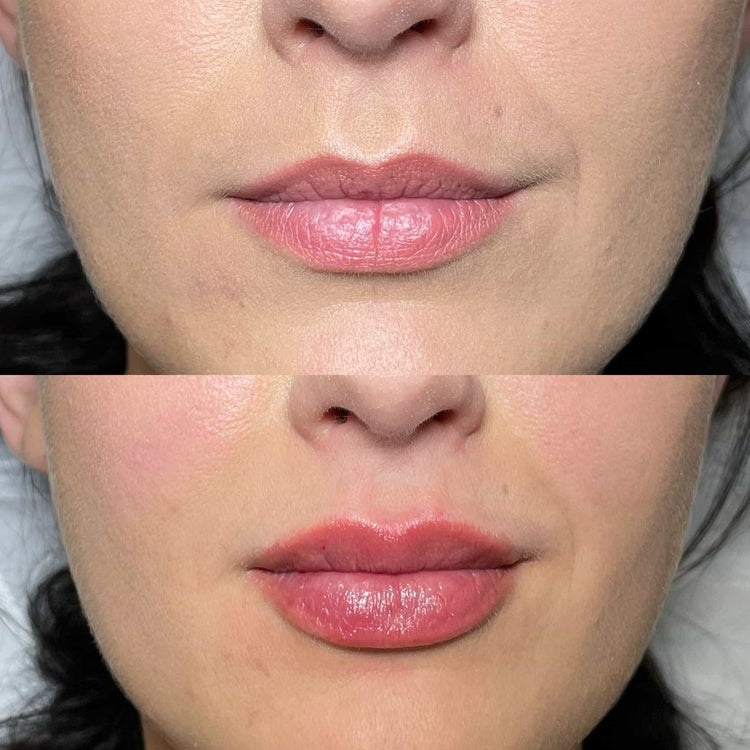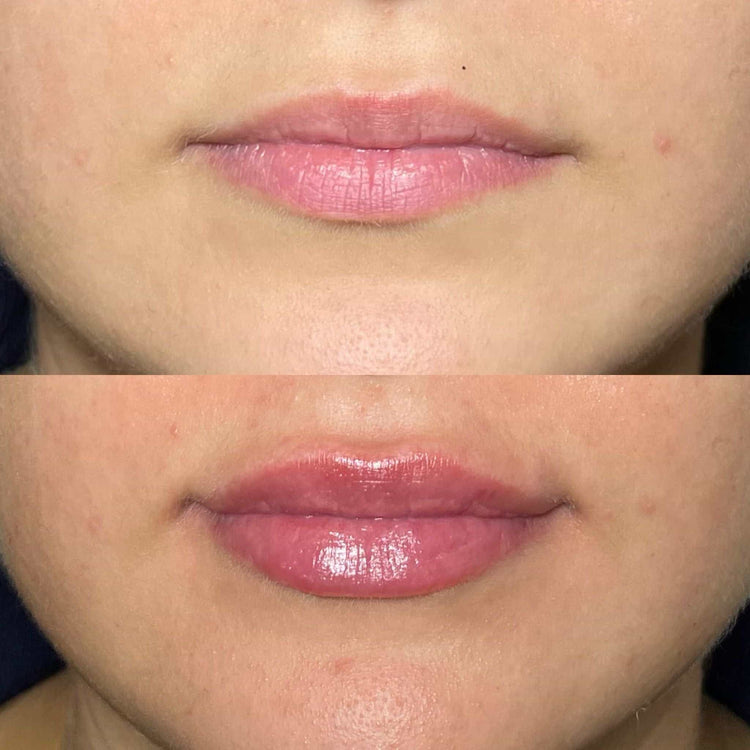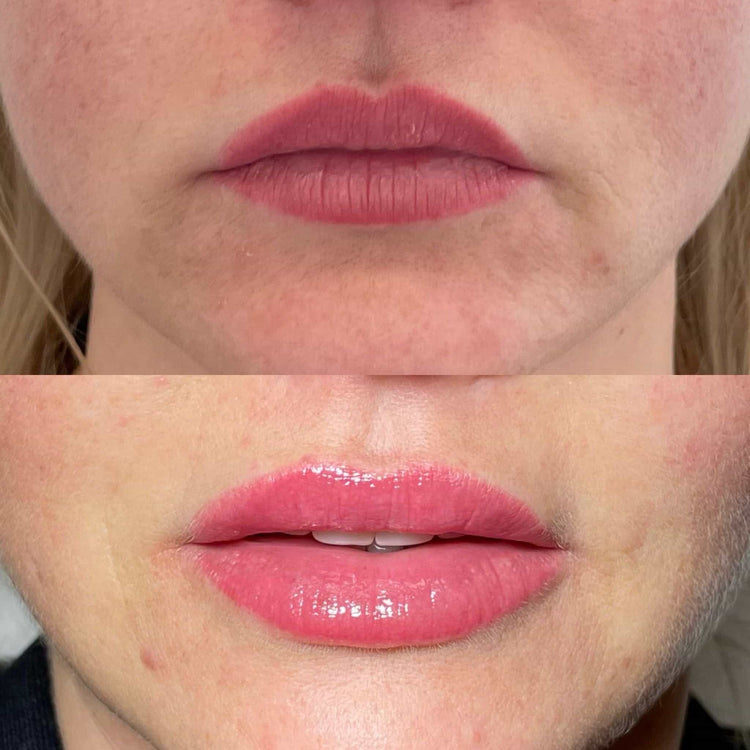About Your Desired Results
Preparing for lip fillers can feel overwhelming, but asking the right questions beforehand can help ensure you achieve your desired results.
Desired Volume and Shape
When discussing your desired outcome with your specialist, be specific about what you envision for your lips. Consider the level of volume you desire—whether it’s subtle enhancement or a dramatic plumping effect. Discuss the shape you prefer, referencing images for inspiration if helpful. Express if you want fuller Cupid’s bows, more defined lip borders, or a symmetrical appearance.
Specific Areas of Enhancement
To maximize your results, clarify what areas need enhancement. Do you want to address thin upper lips? Perhaps you desire fuller cheeks that naturally enhance the shape of your lips. Maybe you have asymmetrical lips and seek balance. By pinpointing specific areas, your specialist can tailor the filler placement for optimal effect.
Inspiration Photos
Inspiration photos are invaluable when communicating your desired lip aesthetic. Choose images that showcase the volume, shape, and symmetry you aspire to achieve. Be sure to select photos of individuals with facial structures similar to yours to ensure realistic expectations. Showing these images to your specialist helps them understand your vision clearly.
Don’t hesitate to discuss any concerns or questions you have about the procedure. Understanding the risks, recovery time, and potential side effects is crucial for making an informed decision.

The Procedure Itself
The Procedure Itself involves injecting dermal fillers into specific areas of the lips to achieve desired volume, shape, and symmetry. These fillers, typically composed of hyaluronic acid, are carefully administered by a qualified specialist using fine needles to minimize discomfort.
Type of Filler Used
The procedure itself involves injecting dermal fillers into specific areas of the lips to achieve the desired volume, shape, and symmetry.
These fillers are typically composed of hyaluronic acid, a naturally occurring substance in the body that helps maintain skin hydration and elasticity.
Injection Technique
The Procedure Itself involves injecting dermal fillers into specific areas of the lips to achieve desired volume, shape, and symmetry.
These fillers are typically composed of hyaluronic acid, a naturally occurring substance in the body that helps maintain skin hydration and elasticity.
- The specialist will use fine needles to inject the filler precisely into designated areas of the lips.
- The injection technique is designed to minimize discomfort and ensure even distribution of the filler.
Pain Management Options
The Procedure Itself involves injecting dermal fillers into specific areas of the lips to achieve desired volume, shape, and symmetry.
These fillers are typically composed of hyaluronic acid, a naturally occurring substance in the body that helps maintain skin hydration and elasticity.
- The specialist will use fine needles to inject the filler precisely into designated areas of the lips.
- The injection technique is designed to minimize discomfort and ensure even distribution of the filler.
Pain management options during the procedure may include topical anesthetic creams applied to the lips prior to injection to numb the area. Some practitioners also offer oral sedation medications, which can help reduce anxiety and discomfort.
Risks and Side Effects

Before undergoing any cosmetic procedure, it’s essential to understand the potential risks and side effects associated with lip fillers.
Potential Complications
While lip fillers are generally considered safe when administered by a qualified professional, there are potential risks and side effects to be aware of. These can include temporary swelling, bruising, redness, tenderness, and itching at the injection site. In rare cases, more serious complications may arise, such as allergic reactions, infection, or uneven filler distribution.
It’s important to discuss your medical history and any medications you are taking with your specialist beforehand, as certain conditions or medications may increase the risk of complications.
Aftercare Instructions
Before undergoing any cosmetic procedure, it’s essential to understand the potential risks and side effects associated with lip fillers.
While lip fillers are generally considered safe when administered by a qualified professional, there are potential risks and side effects to be aware of. These can include temporary swelling, bruising, redness, tenderness, and itching at the injection site. In rare cases, more serious complications may arise, such as allergic reactions, infection, or uneven filler distribution.
It’s important to discuss your medical history and any medications you are taking with your specialist beforehand, as certain conditions or medications may increase the risk of complications.
Aftercare instructions are crucial for optimal results and minimizing the risk of complications. Your specialist will provide specific guidelines tailored to your treatment.
- Keep the treated area clean and dry.
- Avoid touching, rubbing, or picking at the injection sites.
- Apply cold compresses to reduce swelling and bruising as directed by your specialist.
- Refrain from intense physical activity or strenuous exercise for a few days after the procedure.
- Limit exposure to sunlight and UV rays.
- Avoid certain cosmetic products, such as retinoids or exfoliants, for a specified period of time.
Pricing and Costs
Understanding the costs involved in lip fillers is essential for budgeting your expenses.
When discussing pricing with your specialist, inquire about various factors that can influence the final cost, such as the amount of filler needed, the complexity of the desired outcome, and the location of the clinic.
Consultation Fees
Understanding the costs involved in lip fillers is essential for budgeting your expenses.
When discussing pricing with your specialist, inquire about various factors that can influence the final cost, such as the amount of filler needed, the complexity of the desired outcome, and the location of the clinic.
- Consultation Fees: Some clinics charge a consultation fee to discuss your desired results and assess your needs. This fee may be waived if you decide to proceed with the treatment.
- Filler Type and Volume: Different types of fillers have varying costs based on their composition, longevity, and brand. The amount of filler required to achieve your desired look also impacts the overall price.
- Location and Clinic: Clinics in metropolitan areas or high-demand locations often charge higher fees compared to those in less populated areas.
- Specialists’ Experience and Qualifications: Experienced and board-certified specialists may charge higher fees due to their expertise and training.
Treatment Cost Breakdown
Understanding the costs involved in lip fillers is essential for budgeting your expenses.

When discussing pricing with your specialist, inquire about various factors that can influence the final cost, such as the amount of filler needed, the complexity of the desired outcome, and the location of the clinic.
- Consultation Fees: Some clinics charge a consultation fee to discuss your desired results and assess your needs. This fee may be waived if you decide to proceed with the treatment.
- Filler Type and Volume: Different types of fillers have varying costs based on their composition, longevity, and brand. The amount of filler required to achieve your desired look also impacts the overall price.
- Location and Clinic: Clinics in metropolitan areas or high-demand locations often charge higher fees compared to those in less populated areas.
- Specialists’ Experience and Qualifications: Experienced and board-certified specialists may charge higher fees due to their expertise and training.
Payment Options
Understanding the costs involved in lip fillers is essential for budgeting your expenses.
When discussing pricing with your specialist, inquire about various factors that can influence the final cost, such as the amount of filler needed, the complexity of the desired outcome, and the location of the clinic.
- Consultation Fees: Some clinics charge a consultation fee to discuss your desired results and assess your needs. This fee may be waived if you decide to proceed with the treatment.
- Filler Type and Volume: Different types of fillers have varying costs based on their composition, longevity, and brand. The amount of filler required to achieve your desired look also impacts the overall price.
- Location and Clinic: Clinics in metropolitan areas or high-demand locations often charge higher fees compared to those in less populated areas.
- Specialists’ Experience and Qualifications: Experienced and board-certified specialists may charge higher fees due to their expertise and training.
Payment options can vary depending on the clinic.
- Cash or Check
- Major Credit Cards
- Financing Options: Some clinics offer financing plans or payment installments to make treatment more affordable.
Long-Term Maintenance
Long-term maintenance plays a crucial role in preserving the results of lip fillers. Understanding the longevity of the filler and factors that can influence its duration is essential for maintaining your desired look.
Expected Longevity of Results
Lip fillers typically last between six months to two years, depending on various factors such as the type of filler used, individual metabolism, and lifestyle habits.
Hyaluronic acid-based fillers, the most common type used for lip augmentation, are naturally broken down by the body over time.
Maintaining your results may involve repeat treatments to refresh the volume and shape of your lips as the filler gradually diminishes.
Touch-up Appointments
Long-term maintenance plays a crucial role in preserving the results of lip fillers. Understanding the longevity of the filler and factors that can influence its duration is essential for maintaining your desired look.
- Touch-Up Appointments: To maintain the fullness and shape of your lips, you’ll likely need touch-up appointments with your specialist every six months to two years. The frequency of touch-ups depends on the type of filler used and individual factors.
- Lifestyle Habits: Smoking, sun exposure, and certain skincare products can affect the longevity of fillers. Protect your lips from UV damage with sunscreen, avoid smoking, and follow your specialist’s recommendations for skincare to help prolong your results.
Achieve naturally plump lips with Dr. Laura Geige at It’s Me & You Clinic
- Non Surgical Butt Lift In Warlingham Surrey - October 18, 2025
- New Patient Treatment Near Weybridge, Surrey - October 16, 2025
- New Patient Treatment Near Hersham, Surrey - October 14, 2025
